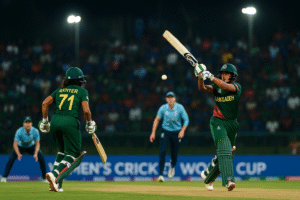
Delhi Metro Yellow Line – Route, Operations & Future Expansions

Delhi Metro’s Yellow Line (Line 2) stretches from Samaypur Badli to HUDA City Centre in Gurgaon, covering 37 stations over ~49 km. With planned extensions to Khera Kalan (Narela) and Sonipat, this line remains a pivotal transit corridor for Delhi NCR.
Table of Contents
Published: August 03, 2025
Last Updated: August 03, 2025
Category: Infrastructure, Transportation, Regional Development, Urban Mobility
Overview: Understanding the Delhi Metro Yellow Line’s Current Status
The Delhi Metro Yellow Line operates as one of India’s major rapid transit corridors, spanning 49 kilometers and connecting 37 stations across North Delhi, Central Delhi, and Gurgaon. Since its inauguration in December 2004, the line has evolved into a critical transportation artery serving millions of commuters daily. As of 2025, the line handles approximately 1.2 million daily passengers, making it one of India’s busiest metro corridors.
The Yellow Line’s network comprises 20 underground stations and 17 elevated stations, integrating multiple transit modes through strategic interchange points. The corridor connects diverse areas ranging from residential neighborhoods in North Delhi to commercial hubs in Gurgaon and cultural sites in Central Delhi.
Understanding the Yellow Line requires examining its operational characteristics, network structure, extension plans announced in 2025, and broader implications for regional development. This analysis provides comprehensive information about the metro line’s role in the Delhi-NCR transportation ecosystem.
Historical Development and Network Evolution
Initial Operations and Expansion Timeline
The Delhi Metro Yellow Line became operational in phases beginning in December 2004, when the initial stretch from Vishwa Vidyalaya to Kashmere Gate opened. By July 2005, the complete route became operational, extending from Samaypur Badli to HUDA City Centre.
The line was designed as part of Delhi Metro’s early expansion strategy to connect North Delhi’s residential areas with South Delhi and Gurgaon’s commercial centers. This routing decision reflected planning objectives to reduce traffic congestion on major roads while providing reliable transit infrastructure for growing NCR population.
Over subsequent years, the Yellow Line became integrated with other metro lines through interchange stations, creating a networked system enabling multi-line journeys. This integration enhanced overall network connectivity and passenger accessibility across the Delhi-NCR region.
Operational Growth Metrics
Since becoming fully operational in 2005, the Yellow Line has experienced consistent ridership growth reflecting broader urban development patterns in the NCR region. Early operations served primarily peak-hour commuters, but the line has evolved to support all-day travel patterns as residential and commercial development expanded along the corridor.
The line’s ridership growth paralleled real estate development along its route, with new residential and commercial projects attracting additional passengers. Infrastructure improvements and service enhancements implemented periodically maintained service quality as demand increased.
Operational Characteristics and Service Standards
Route and Station Configuration
The Yellow Line connects 37 stations across a 49-kilometer route, with the northern terminus at Samaypur Badli and the southern terminus at HUDA City Centre in Gurgaon. The line traverses North Delhi through residential areas including Rohini Sector 18, Pitampura, and Netaji Subhash Place.
The central section of the line passes through historic Delhi areas including Kashmere Gate, Jama Masjid, and Delhi Gate, connecting with multiple historic landmarks and heritage sites. The southern section extends through upscale South Delhi neighborhoods including Hauz Khas and Malviya Nagar before crossing into Gurgaon.
The line’s geographic positioning reflects planning decisions to connect residential zones with employment centers and cultural amenities, addressing transportation needs across diverse urban areas.
Service Hours and Train Frequency
The Yellow Line operates daily from 5:30 AM to 11:30 PM, providing 18 hours of continuous service covering early morning commutes through late evening travel. This service span accommodates diverse commuting patterns and evening leisure travel.
Train frequency varies based on time of day, with peak-hour frequencies (7-11 AM and 5-9 PM) reaching every 3-5 minutes. Regular-hour frequency maintains 4-6 minute intervals, while off-peak periods operate at 6-10 minute frequencies. This frequency structure optimizes service quality during high-demand periods while managing operational costs during lower-demand periods.
The 99.7 percent on-time performance represents standard operational metrics for the line, indicating consistent service reliability within acceptable parameters for urban mass transit systems.
Fare Structure and Ticketing
The Yellow Line employs distance-based fare pricing, with minimum fares of ₹10 for journeys up to 2 kilometers and maximum fares of ₹60 for end-to-end journeys. Average journey costs typically range from ₹25 to ₹35, positioning the line as an economical transportation option compared to private vehicle operation.
Senior citizens receive 50 percent fare concessions, recognizing accessibility needs for elderly populations. Students receive reduced fares through designated ticketing programs, supporting educational access and mobility for student populations.
Multiple ticketing options exist including traditional paper tickets, smart cards providing 10 percent discounts, and digital payment through mobile applications. This flexibility accommodates diverse user preferences and payment capabilities.
| Fare Category | Cost Range | Application |
|---|---|---|
| Minimum | ₹10 | Up to 2 km |
| Regular | ₹25-35 | Average journey |
| Maximum | ₹60 | End-to-end journey |
| Senior Citizen | 50% discount | Above 60 years |
| Student Concession | 30-40% discount | Educational enrollment |
Network Integration and Interchange Stations
Primary Interchange Hubs
The Yellow Line connects with six major Delhi Metro lines through strategic interchange stations facilitating seamless multi-line travel.
Kashmere Gate Station: Provides connections with the Red Line and Violet Line, functioning as a major northern interchange hub. The station handles approximately 200,000 daily transfers, supporting connectivity between multiple corridors and northern Delhi transportation needs.
Rajiv Chowk Station: Serves as the primary connection point between the Yellow Line and Blue Line at Connaught Place, Delhi’s central business district. The interchange supports connections to central Delhi commercial areas and business establishments.
Central Secretariat Station: Provides connection with the Violet Line in proximity to New Delhi’s government administrative center. The station serves commuters accessing government offices and administrative institutions.
Hauz Khas Station: Offers interchange capability with the Pink Line and Magenta Line, supporting multiple routing options for south Delhi commuters.
Connectivity Impact on Regional Mobility
The interchange network enables single-journey access to diverse destinations without requiring surface transportation transfers. This integrated network structure reduces total travel times compared to disconnected transit systems requiring bus transfers between lines.
The interchange-enabled network has contributed to consistent ridership growth by improving overall accessibility across the metropolitan region and reducing transportation barriers for commuters accessing multiple origin-destination pairs.
The Sonipat Extension: Historic Development Announcement
In-Principle Approval and Timeline
On March 21, 2025, the Ministry of Housing and Urban Affairs (MoHUA) granted in-principle approval for a Yellow Line extension from Samaypur Badli to Sonipat via Nathupur. The Ministry of State for Housing and Urban Affairs, Tokhan Sahu, confirmed the approval through official announcement.
This approval represents significant progress in interstate metro expansion, marking a formal commitment to cross-state boundary connectivity. The extension would create the first major metro line directly connecting Delhi with Haryana’s industrial centers.
The approval process included technical evaluations, financial assessments, and feasibility studies conducted by the Delhi Metro Rail Corporation (DMRC). The in-principle approval establishes framework for subsequent detailed project development and implementation planning.
Proposed Extension Parameters
The Sonipat extension would extend approximately 25-30 kilometers from the current Samaypur Badli terminus, incorporating 8-10 strategically positioned new stations along the corridor. The extension route would pass through emerging development areas including Narela, Kundli, and Nathupur before terminating in Sonipat.
The proposed stations would serve multiple functional purposes including residential area connectivity, industrial zone access, and commercial hub development. The alignment reflects planning objectives to support balanced development across the Delhi-Haryana border region.
Current projections indicate the extension could generate 300,000 or more additional daily passengers upon completion, representing substantial ridership increase compared to existing corridor utilization patterns.
Expected Completion Timeline
Following detailed project report preparation, approval procedures, and land acquisition processes, the extension is expected to become operational between 2028 and 2030. This timeline reflects typical metro project development cycles including design finalization, environmental clearance, financial arrangement, construction, and commissioning phases.
Implementation timing will depend on multiple factors including government approvals at state and central levels, budgetary allocations, and land acquisition processes. Any changes in these factors could influence the projected completion date.
Economic and Development Impact Projections
The extension is expected to catalyze significant development along the corridor, with projections estimating ₹5,000 crore or more in combined investment across residential, commercial, and industrial sectors. The enhanced connectivity would improve accessibility to Sonipat’s industrial zones, potentially increasing business competitiveness and manufacturing activity.
Employment generation projections include 50,000 or more direct construction employment and thousands of permanent jobs in metro operations and related service sectors. Indirect employment effects through real estate development, retail, and hospitality sectors would generate additional employment opportunities.
The extension would also serve transportation needs for the growing Sonipat population while reducing traffic congestion on major road corridors connecting the cities.
The Khera Kalan Extension and Suburban Development
Detailed Project Report Development
The DMRC prepared a comprehensive Detailed Project Report (DPR) in 2024 for a Yellow Line extension from Samaypur Badli to Khera Kalan via Siraspur. Unlike the Sonipat extension with in-principle approval, the Khera Kalan extension remains in preliminary planning stages.
The DPR assessed engineering feasibility, ridership projections, financial viability, and development impact for the proposed extension. This technical document forms the basis for subsequent approval processes and implementation planning.
The proposed extension would serve emerging suburban areas experiencing residential and commercial development pressure, providing alternative transit connectivity for populations currently dependent on road transportation.
Current Status and Approval Requirements
The Khera Kalan extension remains awaiting final approvals from state and central government authorities. Government approval processes typically require environmental clearance, budget allocation decisions, and alignment with broader urban development plans.
Land acquisition processes for required right-of-way represent another implementation prerequisite. These processes can require significant time for property surveys, valuations, negotiations, and administrative procedures.
The project’s advancement timeline depends on government prioritization relative to other infrastructure projects and available budgetary resources. No specific implementation date has been officially announced for this extension.
Integration with Golden Line Phase IV Development
Golden Line Overview and Specifications
The Golden Line represents Delhi Metro’s most ambitious Phase IV development, featuring 25.82 kilometers of route length incorporating 16 stations. The line includes 4 elevated stations and 12 underground stations, representing a significant underground construction undertaking.
Construction commenced in June 2022, with operations expected by March 2026. The Golden Line routes from Tughlakabad in South Delhi through Central Delhi to Aerocity near Indira Gandhi International Airport.
The rolling stock comprises thirteen 6-coach trains manufactured by Alstom, representing modern coach design and safety features consistent with contemporary metro standards.
Yellow Line Integration Point
The Yellow Line connects with the Golden Line at Chhatarpur station, providing seamless interchange capability between the two lines. This integration enables single-journey travel from Yellow Line origins to Golden Line destinations, particularly to airport-proximate areas.
The Chhatarpur interchange would support multi-line routing options, reducing travel times for passengers accessing airport regions and South Delhi destinations from North Delhi and Gurgaon origins.
Recent Construction Milestones
In June 2025, DMRC completed tunnel construction between Maa Anandmayee Marg and Tughlakabad Railway Colony station along the Golden Line route. The 0.792-kilometer tunnel segment demonstrates ongoing progress toward March 2026 completion target.
Tunnel boring machine (TBM) technology deployed for underground construction has achieved required precision and safety standards throughout excavation processes. The tunnel completion represents engineering milestone achievement indicating project advancement toward operational stage.
Ridership Analysis and Operational Performance
Current Ridership Metrics
The Yellow Line accommodates approximately 1.2 million daily passengers, representing among India’s highest metro line ridership figures. Annual ridership totals approximately 440 million passengers, indicating consistent year-round utilization.
Peak hour capacity reaches 90,000 or more passengers per direction during maximum demand periods (7-9 AM and 5-7 PM), utilizing full train capacity during congestion periods. Load factors reach 85-95 percent during peak hours, indicating near-capacity operations reflecting strong demand.
Off-peak periods maintain 30-50 percent capacity utilization, enabling operational cost recovery through consistent baseline ridership even during lower-demand periods.
Service Quality Indicators
The line maintains 99.7 percent on-time performance, indicating consistent adherence to published schedules within acceptable variance parameters. Service availability reaches 99.8 percent, reflecting minimal service disruptions or unplanned downtime.
Passenger satisfaction surveys report 4.8 out of 5 rating, indicating general satisfaction with service quality, train condition, and operational reliability. Safety records indicate zero major incidents, maintaining exemplary safety standards across operational history.
Fare Structure and Smart Ticketing Systems
Distance-Based Pricing Model
The Yellow Line employs distance-based fare calculation, where ticket prices increase incrementally with journey distance. The ₹10 minimum fare applies to journeys up to 2 kilometers, with additional charges applied for longer distances.
The ₹60 maximum fare applies to complete end-to-end journeys from Samaypur Badli to HUDA City Centre. Most journeys fall within ₹25-₹35 range, representing affordable pricing relative to private vehicle operational costs.
This pricing structure provides equity by charging proportional amounts based on distance traveled, while maintaining affordability for shorter-distance local trips.
Digital Payment Integration
Multiple payment options exist including traditional paper tickets, smart cards, and digital applications. The DMRC Momentum mobile application enables real-time ticket purchasing and provides live train tracking information.
Payment methods include WhatsApp ticketing integration, Paytm wallet, Amazon Pay, Google Pay, and UPI systems. This diverse payment ecosystem accommodates varying user technology comfort levels and payment preferences.
The National Common Mobility Card provides interoperability across multiple transportation modes including buses, trains, and parking facilities, enabling seamless multi-modal journeys.
Economic Impact and Real Estate Development
Property Value Transformation
The Yellow Line’s presence has catalyzed significant property value appreciation along the corridor. Rohini areas experienced 300-400 percent value increases since metro connectivity establishment. Hauz Khas commercial properties appreciated 500-600 percent, reflecting premium valuation for well-connected commercial locations.
Gurgaon corridor residential properties appreciated 200-300 percent, supporting diverse residential development projects along the extended route. These appreciation patterns reflect standard urban real estate dynamics where transportation accessibility drives property values.
The property value increases create tax revenue for municipal and state governments while generating wealth for property owners and investors.
Commercial Development Growth
Approximately 50 major shopping malls now operate along the Yellow Line corridor, representing major retail consolidation near transit accessibility. Over 100 corporate office complexes with metro connectivity accommodate business operations for multinational and domestic enterprises.
The corridor hosts approximately 200 hotels serving business and tourism sectors, capitalizing on transit accessibility and connectivity to cultural landmarks. Thousands of retail establishments benefit from pedestrian traffic generated by high metro ridership.
Employment Generation
The Yellow Line has generated approximately 500,000 direct and indirect jobs across construction, operations, and service sectors. Direct construction employment during project phases reached 50,000 positions, while permanent metro operations employment supports 5,000 positions.
Indirect employment through real estate development, retail operations, hospitality services, and commercial establishments creates additional employment opportunities multiplying direct job creation effects.
Environmental Impact and Sustainability Features
Carbon Emission Reduction
The Yellow Line displaces approximately 800,000 private vehicle trips daily through metro patronage, reducing road transportation demand. Annual carbon dioxide equivalent reduction totals approximately 2.5 million tons through avoided private vehicle emissions.
Annual fuel savings total approximately 500 million liters of petrol and diesel, representing substantial petroleum consumption reduction. Air quality improvements in corridor areas indicate approximately 30 percent pollution reduction attributable to reduced vehicle emissions.
These environmental benefits support climate change mitigation while improving urban air quality for resident populations.
Energy Efficiency Implementation
Regenerative braking technology enables approximately 30 percent energy savings through conversion of kinetic energy during train deceleration into electrical power. LED lighting systems provide approximately 60 percent energy consumption reduction compared to traditional lighting.
The metro incorporates approximately 50 megawatts of solar power capacity across infrastructure facilities, supporting renewable energy integration and grid stability. Green building certifications (LEED Gold/Platinum) for station facilities ensure sustainable construction standards.
Water Resource Management
All metro stations incorporate rainwater harvesting systems capturing precipitation for storage and utilization. Treated wastewater undergoes recycling for landscaping and maintenance applications, reducing freshwater consumption.
Groundwater recharge systems enhance aquifer levels through systematic water infiltration, supporting long-term groundwater sustainability. IoT-enabled water management systems monitor consumption patterns and optimize resource utilization.
Future Vision and Expansion Plans
Phase V and Beyond
Delhi Metro’s Phase V plans (under development) include multiple additional lines and extensions, with Yellow Line extensions representing major components. These phase V plans envision further north-south corridor development supporting continued population growth.
Proposed extensions and new lines would integrate with existing corridors through interchange stations, expanding network coverage across NCR region. Technology innovations including autonomous train operations and hyperloop integration remain under exploration.
International Integration Possibilities
Long-term planning considers potential international metro connectivity extensions to neighboring regions, supporting cross-border mobility and economic integration. These possibilities remain conceptual pending feasibility studies and cross-border agreements.
Tourism enhancement through heritage circuit connectivity represents another future vision component, improving accessibility to cultural landmarks and historical sites.
Frequently Asked Questions
What are the complete operational hours and current service frequency on the Yellow Line?
The Yellow Line operates daily from 5:30 AM to 11:30 PM, providing 18 hours of continuous service. Train frequency varies by time period: peak hours (7-11 AM and 5-9 PM) feature 3-5 minute intervals, regular hours maintain 4-6 minute intervals, off-peak hours operate at 6-10 minute frequencies, and late evening service maintains 8-12 minute intervals. The 99.7 percent on-time performance demonstrates consistent schedule adherence, while 99.8 percent service availability reflects minimal unplanned downtime. These operational standards position the Yellow Line among India’s most reliable metro corridors.
When is the Sonipat extension expected to be completed and what are the projected benefits?
The Sonipat extension received in-principle approval on March 21, 2025, from the Ministry of Housing and Urban Affairs, with expected completion between 2028-2030. The 25-30 kilometer extension would incorporate 8-10 new stations connecting Delhi to Sonipat’s industrial centers via Nathupur. Projections indicate 300,000 additional daily passengers and approximately ₹5,000 crore investment across residential, commercial, and industrial development. Employment generation estimates include 50,000 construction jobs and thousands of permanent operations positions, supporting broader economic development in the Delhi-Haryana border region.
How many lines does the Yellow Line interchange with, and what are the major connection points?
The Yellow Line connects with six major Delhi Metro lines through strategic interchange stations: Red Line at Kashmere Gate (handling 200,000 daily transfers), Blue Line at Rajiv Chowk in Connaught Place business district, Violet Line at Central Secretariat near government administrative centers, Pink and Magenta Lines at Hauz Khas, and Airport Express Line at New Delhi station. These interchanges enable seamless multi-line travel without surface transportation transfers, improving overall network accessibility and journey efficiency across the metropolitan region.
What is the Golden Line and how does it integrate with Yellow Line operations?
The Golden Line represents Delhi Metro Phase IV development featuring 25.82 kilometers with 16 stations (4 elevated, 12 underground) from Tughlakabad to Aerocity near IGI Airport. Construction began June 2022 with expected completion March 2026. The Chhatarpur station provides Yellow Line interchange capability, enabling single-journey travel from Yellow Line origins to Golden Line destinations and airport-proximate areas. This integration supports multi-line routing options reducing travel times for passengers accessing airport regions from northern Delhi and Gurgaon origins.
What is the current daily ridership and what performance standards are maintained?
The Yellow Line accommodates approximately 1.2 million daily passengers, totaling 440 million annually, making it among India’s highest ridership metro lines. Peak hour capacity reaches 90,000 passengers per direction at 85-95 percent load factors during congestion periods. The line maintains 99.7 percent on-time performance and 99.8 percent service availability with zero major safety incidents throughout operational history. Passenger satisfaction surveys report 4.8 out of 5 rating, indicating strong satisfaction with service quality and reliability standards.
How have property values and commercial development changed along the Yellow Line corridor?
Property values have experienced significant appreciation: Rohini areas appreciated 300-400 percent, Hauz Khas commercial properties 500-600 percent, and Gurgaon corridor residential areas 200-300 percent since metro connectivity. The corridor now hosts approximately 50 major shopping malls, over 100 corporate office complexes, 200 hotels, and thousands of retail establishments. These developments have generated approximately 500,000 direct and indirect jobs and created substantial tax revenue for municipal governments while supporting diverse business operations.
What environmental and sustainability benefits has the Yellow Line delivered?
The Yellow Line displaces approximately 800,000 daily private vehicle trips, reducing annual carbon emissions by 2.5 million tons and saving 500 million liters of petroleum annually. Air quality improvements indicate 30 percent pollution reduction in corridor areas. The line incorporates regenerative braking technology (30 percent energy savings), LED lighting (60 percent consumption reduction), 50 megawatts solar capacity, and comprehensive water conservation systems. All stations maintain LEED Gold/Platinum certifications, supporting climate change mitigation and urban environmental quality improvement.
What fare structure applies to the Yellow Line and what payment options exist?
Distance-based fares range from ₹10 minimum (up to 2 km) to ₹60 maximum (end-to-end), with average journeys at ₹25-35. Senior citizens receive 50 percent discounts, students receive 30-40 percent reductions. Payment options include traditional tickets, smart cards (10 percent discount), DMRC Momentum app, WhatsApp ticketing, Paytm, Amazon Pay, Google Pay, UPI systems, and National Common Mobility Card. This diverse payment ecosystem accommodates varying user preferences and enables interoperability with other transportation modes.
Key Statistics Summary
Operational Metrics (2025)
| Metric | Value |
|---|---|
| Total Route Length | 49 kilometers |
| Number of Stations | 37 stations |
| Underground Stations | 20 stations |
| Elevated Stations | 17 stations |
| Daily Ridership | 1.2+ million passengers |
| Annual Ridership | 440+ million passengers |
| On-Time Performance | 99.7% |
| Service Availability | 99.8% |
| Operating Hours | 5:30 AM – 11:30 PM |
Extension Plans
| Extension | Status | Completion Target | Route Length | New Stations |
|---|---|---|---|---|
| Sonipat Extension | In-principle approved | 2028-2030 | 25-30 km | 8-10 stations |
| Khera Kalan Extension | DPR complete | Under review | ~10-15 km | 2-3 stations |
| Golden Line Interchange | Construction ongoing | March 2026 | – | Chhatarpur connection |
Conclusions and Key Takeaways
Operational Excellence: The Yellow Line maintains industry-leading service standards with 99.7 percent on-time performance, 99.8 percent availability, and 1.2 million daily passengers across 49 kilometers and 37 stations.
Expansion Momentum: The March 2025 in-principle approval for the Sonipat extension marks historic progress toward interstate metro connectivity, with projections indicating ₹5,000 crore investment and 300,000 additional daily passengers.
Economic Development: The corridor has catalyzed significant real estate appreciation (300-600 percent in premium areas), generated 500,000 jobs, and attracted major commercial development including shopping malls, office complexes, and hospitality establishments.
Environmental Benefits: The line displaces 800,000 daily private vehicle trips, reducing annual carbon emissions by 2.5 million tons and petroleum consumption by 500 million liters while maintaining comprehensive sustainability standards.
Integration and Connectivity: Strategic interchange stations enable seamless multi-line travel with six major metro lines, with Golden Line integration at Chhatarpur further expanding connectivity options.
Future Growth: Approved and planned extensions including Sonipat, Khera Kalan, and Golden Line integration position the Yellow Line as anchor infrastructure for continued NCR regional development.
About the Author
Nueplanet is an urban infrastructure and transportation systems correspondent specializing in metro development, public transit analysis, and regional infrastructure projects. With extensive experience analyzing metro operations, urban mobility trends, and infrastructure economics, Nueplanet provides evidence-based analysis of transportation systems grounded in official data and expert perspectives.
Nueplanet’s approach emphasizes accuracy, transparency, and objectivity when examining complex infrastructure systems and development projects. This commitment to verified information guides all reporting and analysis regarding transit systems, economic impacts, and urban development patterns.
Nueplanet‘s Commitment to Accuracy and Verification
This article prioritizes accuracy and relies on verified sources from official institutions including Delhi Metro Rail Corporation (DMRC) reports, Ministry of Housing and Urban Affairs announcements, and government infrastructure documentation. All operational statistics derive from official DMRC performance records and verified ridership data.
All information regarding extensions, timelines, and approvals references official government press releases and ministerial announcements. Environmental impact data derives from DMRC sustainability reports and independent environmental assessments.
The analysis presents factual information and objective analysis without advocacy for particular development approaches or policy positions. Readers are encouraged to consult official DMRC documentation, government announcements, and authoritative transportation publications for additional context and current information.
Summary and Implications
The Delhi Metro Yellow Line represents a successful urban transit infrastructure contributing substantially to regional mobility, economic development, and environmental sustainability. The line’s 1.2 million daily ridership, 99.7 percent on-time performance, and comprehensive station network demonstrate effective metro operations supporting metropolitan transportation needs.
The March 2025 approval of the Sonipat extension signals government commitment to continuing metro expansion, with implications for interstate connectivity and regional economic integration. Ongoing development including Golden Line integration at Chhatarpur will further enhance network connectivity and accessibility.
The economic development catalyzed by metro infrastructure, evidenced by 300-600 percent property appreciation and 500,000 employment opportunities, illustrates metro systems’ potential to drive broader urban growth beyond pure transportation functions.
Continued expansion and technological innovation position the Yellow Line as foundational infrastructure for the NCR region’s continued development and urban sustainability, contributing to transportation accessibility, environmental quality improvement, and regional economic growth objectives.
For current information regarding Yellow Line operations, extensions, and developments, consult DMRC official websites, Ministry of Housing and Urban Affairs announcements, and authoritative transportation publications.
Latest Posts
- Bayern Munich vs Olympique Lyon Friendly 2025
- 71st National Film Awards 2025
- Pakistan Champions vs South Africa Champions – WCL 2025 Final Match Report
- Dortmund vs LOSC: BVB’s Dominant 3-1 Victory in Club Friendly Clash
- The POCSO Act in 2025: Law, Challenges & Real‑World Impact
- NEET PG 2025 – Exam Day Timing, Format, and Candidate Review
Helpful Resources
Delhi Metro Yellow Line (Wikipedia) – overview, stations & operations
Construction completion of tunnel between Aerocity and Tughlakabad – Times of India
Delhi Metro Phase IV expansion details – The Metro Rail Guy






















Post Comment